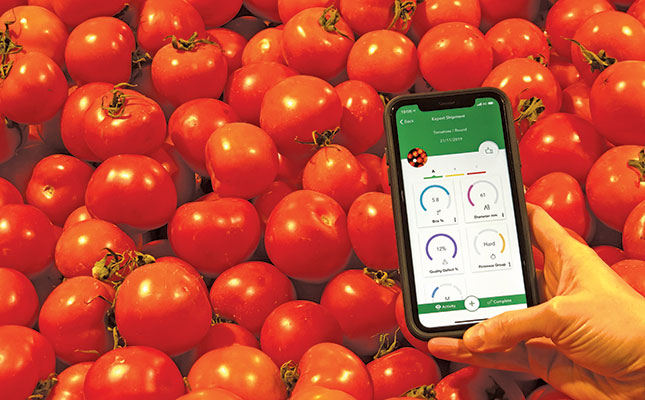
Photo: Jacques Claassen
South Africa is amongst the world’s most important wine-producing countries. It comes in at number eight, and is the only country in this group that, in 2014, grew for the fifth consecutive year. However, compared with the world’s top three wine countries – France, Italy and Spain, whose combined production totals 47% of the world’s volume – South Africa’s growth has been fairly low.
READ:Growing the European market for avocados
Nonetheless, according to Rico Basson, executive director of service company VinPro, South Africa has seen a drastic improvement in wine production techniques over the last five years, and over the past three years producers have been blessed with excellent climatic conditions. In fact, in 2014, South Africa produced too many wine grapes – between 75 000t and 80 000t above market demand – resulting in a structural wine surplus.
“If the industry doesn’t succeed in selling this surplus through exports or on the local market, wine prices will remain under pressure,” Basson says. “It illustrates that we should get supply and demand in line. Questions arise: are our wine producers farming too efficiently? Or do we lag behind with marketing?”
Global wine production, barring grape juice and musts, is likely to reach 271 million hectolitres in 2014, a decrease of 6% from 2013 but a return to an average level. This is according to the International Organisation of Vine and Wine’s early estimates for 2014 (see table). These statistics also show that 81,5% of the world’s wine is produced by the top 10 wine-producing countries.
How should SA position itself?
Although the Economic Review of SA Agriculture for the year ending 30 June 2014 illustrates that the value of wine exports (nearly R8 billion) has been beaten only by citrus exports (R10,1 billion), there is a need to increase the profitability of the country’s wine industry, says Basson.
“We’re too small to take the world’s biggest wine- producing countries on with price points,” Basson told Farmer’s Weekly. “This means we should be highly adaptable in order to seize opportunity and increase the industry’s profitability.”
There is also a need to reinvest in vineyards and technology, in order to ensure that South Africa retains its world ranking.
Currently, South Africa has a total area of approximately 100 000ha under vines. Says Basson: “We should renew or replant 5% of our vineyards every year – in other words, 5 000ha.” During the last five years, only 2 000ha to 2 500ha have been replanted, and the industry has been losing 1 000ha and 100 producers every year.
“But there seems to be a turning point with regard to reinvestments,” he says. “During 2014, a total of 3 200ha were replanted.”
When asked whether the increased production from fewer hectares could be ascribed to expansions in the irrigation areas, as well as whether the production of quality wines can be sustained, Basson says he is confident that South Africa still has a good balance of wines between the coastal dryland and inland irrigation areas.
“The number of hectares is not the most important factor. Of more importance is that South Africa is planting virus-free material, using high-quality clones and applying new trellising methods and new mechanisation technology,” he says.
Looking forward
Apart from Basson, who joined VinPro not long ago, marketing body Wines of South Africa (WOSA) recently appointed a new CEO, Siobhan Thompson. Other important institutions are currently headed by new-generation leaders, including Gerard Martin of Winetech, Yvette van der Merwe of SA Wine Industry and Systems, and Kurt Moore of the SA Liquor Brand Owners’ Association.
Commenting on the wine industry’s history, Basson emphasises several aspects:
- South Africa’s modern wine industry only truly entered the global stage 20 to 21 years ago at the beginning of the country’s democracy. Since then, exports have increased from 30 million litres to 525 million litres. This is despite the fact that the industry’s history can be traced back to 1659.
- A great deal has been achieved during the last 20 years, especially with the quality of wine production.
- The industry can be proud of several strengths, but there are shortcomings that require strategic objectives and action plans.
Due to the nature of wine-making, the industry requires long-term investments of 20 years or longer. Also, wine farmers operate in a highly competitive business environment that calls for well-designed business plans and income. Basson emphasises that in global wine terms “20 to 21 years is nothing”.
“However, the local industry has been production-orientated for too long and not sufficiently market-orientated. In recent years, questions started arising as to who was responsible for what within the industry.” Basson says that he, Thompson, Martin,
Van der Merwe and Moore have recently embarked on a wine industry strategic exercise (WISE).
Wise’s objectives
The industry developed its Vision 2020 strategy in 2001, revising it in 2007. Basson believes it should be revised annually.
At a recent meeting, the five leaders approved six key strategic objectives of WISE:
- Economic empowerment and development;
- Social development and upliftment;
- Human resources development and training;
- Market development and promotion;
- Knowledge and information development;
- and Technological innovation, especially technological transfer.

Nine action plans were identified in order to reach the key objectives by 2025. These are:
Land reform and transformation
Black-owned land and water in the wine industry should have been increased from the current level of 1,5% to 15%. This should be done by district committees creating and carrying out necessary projects.
Brand SA local marketing
Apart from WOSA’s marketing activities abroad, the industry should create a generic marketing strategy locally. Such a strategy should include educating local consumers in enjoying wine responsibly. “Per capita consumption of alcohol has increased in South Africa over the last 20 years, but this has not been the case for wine consumption,” Basson reports. “South Africa is the world’s wine-producing country with the lowest per capita wine consumption (six litres/capita), and domestic consumption of wine has decreased during the last 15 years.”
Wine tourism baseline study and strategy development
In 2014, the contribution of wine and wine tourism to South Africa’s GDP amounted to R35 billion, of which tourism contributed R5,3 billion. The industry wants to increase the combined figure to R60 billion. Turning wine tourists into wine ambassadors is key to a successful outcome.
Information portal
The industry intends to transform its six existing websites into a single information portal and search engine.
Market intelligence
Data analysis and market research must be applied. “Every wine farmer wants to export to the USA, but needs a more sophisticated level of consumer, market and business intelligence,” Basson explains.
Value chains
More effective value chains, in the form of sustainable price points and logistics, must be achieved, through transforming the current 65:35 ratio between bulk and packaged exports to 40:60.
Value chain research
Technology transfer and innovation strategies should result in research being carried out throughout the value chain.
Learning and development
Education should cover all levels across the value chain. A co-ordination desk, from the NQF1 farm worker to NQF10 executive level, should be established.
Social contract
A social contract between government, farmers and farm workers should be created. On a social level, according to Basson, the industry has already made huge inroads. He cites Fairtrade and The Wine & Agricultural Trade Association’s (WIETA) initiative as prime examples.South Africa is the world’s largest producer of Fairtrade wine. WIETA more than doubled its membership in 2013, as local producers continued to seek accreditation for fair labour practices on their farms and in their cellars.
More than a third of the country’s wine producers are WIETA members, and almost half of the 25 000 workers in the wine industry are benefiting from the initiative, Basson says, adding that 60 to 80 wine producers are joining WIETA every month.
The volume of ethical trade is currently at 20%, but the industry target is to increase this to 100% by 2025. Basson also says that the wine industry is already funding a social worker in five of its nine production areas, and would like to expand this initiative to all nine areas.
Ensuring a collective buy-in
“If we don’t embark upon these projects to reach WISE’s key strategic objectives successfully, we’ll fall short in competitiveness and profitability,” he says. “As industry bodies, we work closely with the private sector, which will be responsible for implementation of these projects and we need the collective buy-in of stakeholders.”
Several of the projects are in implemention stages, but Basson stresses that there will be no ‘magic launch date’. If the industry succeeds with these building blocks, it could relaunch itself on a new growth curve. “If the wine industry as a whole can be on the same page, it will be able to lift Brand SA to a new level.”
Phone Rico Basson on 021 276 0437 or email him at [email protected].
This article was originally published in the 12 December 2014 issue of Farmers Weekly.













